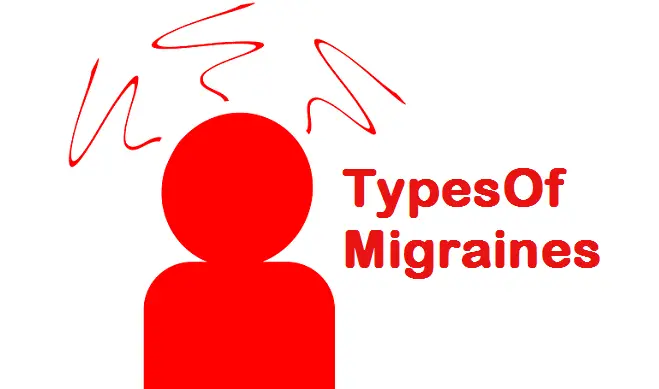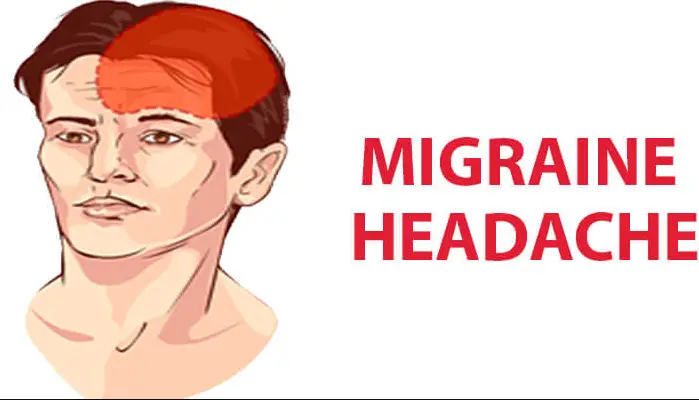Migraine Headache Types and Symptoms
Headaches of any kind can be quite painful, however with migraine headaches; the pain goes beyond anything that you might have previously experienced. So, how can you tell if your headache can be called a migraine headache? Here is an explanation of how to distinguish between a regular headache and a migraine headache.
Headaches as most of us know them are characterized by a throbbing sensation or pressure in our heads. The pain comes on slow, then gets worse if left untreated. This pain can continue for hours until we discover the cause of the pain and resolve it. Most of us can get through a day with a normal headache. A few pain relievers or anti-inflammatory drugs and we are good to go.
Migraine headaches are often described as a chronic pain, with a regular episode occurring each week, month, or even year. Each episode can last for hours or, in some cases, for days. The pain can occur on either side of the head or both at the same time, or switch from one side to the other. The pain is more like a stabbing sensation along with throbbing. Many migraine sufferers report stabbing pain in their eyes and temples. With such intense pain, migraines can interfere with work, home life, and even the ability to think clearly. The migraine headache sufferer is sometimes completely debilitated by the pain.
Contents
Different Types of Migraine Headaches

If you are suffering from headaches that seem too severe to be your average, garden-variety headache, you may be suffering from migraines. A migraine is a serious headache that lasts anywhere from a few hours to several days. The pain is quite intense and has many symptoms that are present at the same time.
However, migraines do vary. Different types of migraines are defined by what areas they affect. It’s not to say that a migraine fits any category precisely or exclusively, but many migraines suffer can describe their symptoms within one or several of these groups:
1. A common migraine
This is a migraine headache that occurs with the associated symptoms of nausea with or without vomiting, sensitivities to light, sound and odor, and pain on one or both sides of the head.
2. A classic migraine
Migraines that occur with auras are considered classic. Auras are most likely visual disturbances but can be a feeling of pins and needles in your limbs or problems with hearing or experiencing confusion.
3. Ocular
In this type of a migraine, the aura experienced is all visual. This may be described as seeing circles that are dark, then grow bright, change shape, and move about. It may be zigzag patterns of different colors, or black and white. The patterns may move to the peripheral or stay in front. There may be flashing, sparkling, flowing, or other artistic or graphic appearances.
4. Hemiplegic
This type of a migraine has often been confused with symptoms of a stroke. When a hemiplegic type of a migraine occurs, it produces muscle weakness and even temporary paralysis on one side of the body. There may be a severe pain on one side of the head, vision changes, slurred speech, and confusion, again, much like a stroke.
5. Retinal
Unlike an ocular migraine, this type of a migraine is usually accompanied by vision loss in one or both eyes. This temporary vision loss may be associated with pain behind the eyes. The vision loss or interruption is typically limited to one eye.
6. Basilar artery
This artery is located at the back of the head causing the sufferer to feel pain in the back of the head instead of where you typically think of migraine pain; in the forehead and around the eyes. You may experience trouble with speech, tinnitus, and vomiting. Women are usually the sufferers of this type of a migraine.
7. Ophthalmoplegic
In this rare type of a migraine, paralysis appears with this type of a migraine in the muscles surrounding the eye. It can lead to damage to the nerves resulting in permanent vision problems. You may experience double vision with this condition and need to seek immediate medical attention.
It could be that you have a history of migraines and have been controlling them for many years. However, if a migraine comes on suddenly and often, you should know that these acute symptoms could be a sign of a more serious condition. If you experience any of the following symptoms, seek immediate medical attention:
- A sudden and intense headache that is accompanied by a feeling like a thunderclap in your head (could be a sign of an aneurysm)
- Migraines that occur later in life, after the age of 50
- Migraines accompanied by fever, stiff neck, nausea, or vomiting
- Headaches that are accompanied by stroke symptoms (mental confusion, slurring speech, numbness in the extremities)
- Intense headaches after a trauma to the head
- Throbbing eye pain accompanied by physical changes in the eyes (redness and visual halos)
About eighty percent of migraine sufferers experience the common or classic type of a migraine headache. Which means that about twenty percent may be experiencing the less common, and possibly more serious, type of a migraine. Knowing the symptoms of all the types of migraine headaches will help you understand what treatments will work best and when immediate medical attention is needed.
Symptoms of Migraine Headaches

Recognizing the signs and symptoms of migraine headaches is the first step to getting relief. Here is a basic overview of what constitutes a migraine:
There are warning signs that a migraine is about to occur which, when recognized, can aid in the diagnosis and relief of a migraine. The term used for this announcement that a migraine is coming is “prodrome.” The term ‘migraine with aura’ of used typically to refer to a migraine episode in a person who often experiences an aura before a migraine headache. These signs may occur hours or as much as a day before the onset of an actual migraine headache.
People have reported seeing auras, which are visual disturbances before a migraine develops. Auras that affect your vision can include:
- flashes of light
- blind spots (like looking directly at the sun)
- shiny spots or stars
- zigzag pattern
There may also be auras creating other sensory disturbances. These auras affect a wide range of areas such as:
- numbness
- tingling
- problems with speech
Other warning signs, which are not classified as auras, are more common; and, because they are common, the migraine sufferer often misses these warning signs. These warning signs can include:
- irritability
- depression
- increased energy
- unusual thirst
- sweet cravings
Other Signs of Migraine Headaches
What happens if you do not recognize the warning signs that a migraine is coming? How will you know what you are experiencing is actually a migraine headache? The symptoms of migraines are distinctive from other headaches. If you are experiencing any of these symptoms, you may be suffering from a migraine headache:
- intense stabbing pain
- nausea with or without vomiting
- sensitivity to light
- sensitivity to sound
- sensitivity to certain odors
- sudden onset of pain
Unlike ordinary headaches, migraines often come on full tilt. Their intensity is great from the beginning. Exposure to bright lights, as well as physical activity, can increase the pain. If you close yourself off in a dark, quiet room, and your headache lessens, you may be experiencing a migraine.
Without definite symptoms and warning signs, some people miss the migraine diagnosis. If you suspect you may be suffering from migraine headaches, pay attention to see if any of these symptoms ring true for you. Treating a migraine headache at the first warning signs often increases the chance of a faster recovery. That is why recognizing the warning signs and symptoms of migraine headaches are the first step to pain relief.


